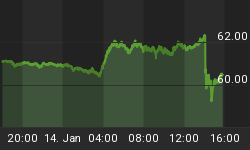We head into Thursday's trading session with an extended market that now has two negative fundamental factors to focus on; the Middle East and rapidly rising oil prices. Regardless of how long oil prices remain elevated, the market sees it as a reason to sell. According to today's Wall Street Journal:
Oil futures touched $100 a barrel at the New York Mercantile Exchange Wednesday -- the highest since before the financial crisis hit in late 2008 -- before pulling back. Pricier oil drives up the costs of everything from gas at the pump to the raw materials used to make nylon and food packaging. That could mean higher inflation and prompt consumers, who lately have shown more willingness to spend, to cut back their purchases.
On Tuesday and Wednesday, we took some profits off the table based on the "incremental approach." In terms of strategy, we sold or lightened-up on copper (JJC), agriculture (DBA), technology (QQQQ), mid-caps (IWP), transports (IYT), consumer discretionary (XLY), Malaysia (EWM), and emerging markets (EEM). We still own some of these positions, but our exposure has been reduced and our cash position increased. Depending on how we finish up today, we are open to raising a little more cash, continuing to step away incrementally from risk until the risk-reward profile of the market improves.
In How High Can Stocks Go?, we suggested the market may have trouble surpassing the range between 1,313 and 1,326. We are now back below those levels, which means the market has reversed from a fairly logical region; something that needs to be respected given the recent extended readings of our models (see red area in table).
It always pays to take a step back to a longer timeframe and check on the market health. A high percentage of market participants look only at daily charts. Obviously, a daily chart of the S&P 500 is going to look weak after the last two days, but what about a weekly chart that speaks to the longer-term outlook? We examine two S&P 500 weekly charts below.
If you understand basic support and resistance, then you also can understand how to use basic trendlines. If the S&P 500 fails to find its footing near the dotted blue trendline below, it may allow for a move back toward 1,275.

This weekly chart of the S&P 500 does support our risk-reduction moves over the last two days (we also cut back on emerging markets a few weeks ago). The relative strength index (RSI) has moved below 70, which is bearish for the intermediate-term (see 1). Price at point A diverged in a bearish manner from the ultimate oscillator (ULT) at point B. And if you care about trends, as we do, the most concerning thing on the weekly chart of the S&P 500 is the black ADX line turning down from an elevated level (see 2).

How does the chart above relate to our possible strategy going forward? It tells us to be open to further risk reduction should the markets remain weak. If the current pullback morphs into a significant and prolonged correction, the incremental approach will limit the damage. If the market rebounds, we can still participate since we did not make a radical move by going to 50% cash. Most likely, we would cut back further on mid-caps (IWP) and consumer discretionary (XLY) should another step away from risk be needed in the next few days.
















